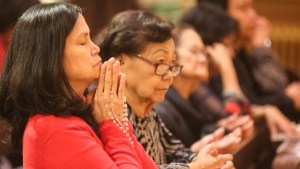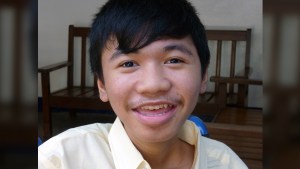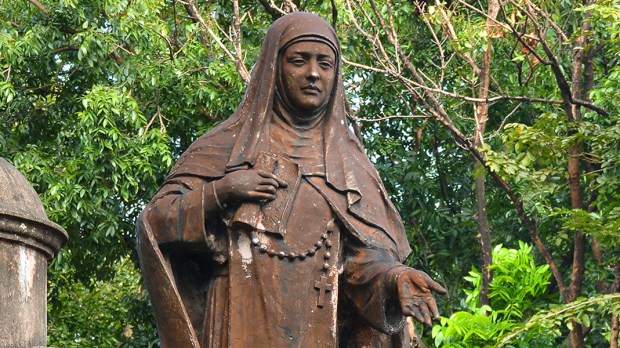Francisca de Fuentes was born in Manila in 1647. Her father was Don Simon de Fuentes, a Spanish nobleman, and her mom was Doña Ana Maria del Castillo y Tamayo; Francisca and her siblings were thus of mixed race.
When Francisca was around 19, she was given in marriage to a young man who took ill and passed away shortly after the wedding. Suddenly, she was a 20-year-old widow with no children, and in 1667 Manila, that was not a good position to be in. A caste society existed, and widowed women, especially a mestiza woman, did not fare well being in such a position.
However, Francisca was a woman of deep faith. She was able to peel back the cloud of her grief and glimpse the silver lining that led her closer to God. Christ was calling her, and she delved deeply into prayer and began helping as many poor and sick in the city as she could.
It was the 17th century, and in the colonial Philippines women were far from liberated. Francisca’s mixed-race heritage further complicated her situation. She wanted to start a religious order for Filipino women, however, she would be confronting daunting challenges to endeavor such a thing.
She then had a vision of St. Dominic and St. Francis. Both were calling her and she had to choose. She bowed before St. Dominic and chose to be a Dominican. In 1682 she was admitted as a Third Order Dominican and picked the name of Francisca del Espiritu Santo, Francisca of the Holy Spirit.
She was joined by her sister, Maria Ana de Fuentes, and by Sebastiana Salcedo, and Antonia de Jesus Esquerra. The four lived separately but wore habits in public, helping the sick and needy, and spending hours together in prayer. They became known as “beatas” (blessed) because they frequented the sacraments and set fine examples of humility and devotion.
In 1686, Francisca sent a request to the Director of the Third Order asking if she and the other tertiaries could live together. The four sisters prayed long and hard, fasted, and did penance that their prayers might be answered. On January 11, 1688, the Master of the Order, Father Antonino Cloche, OP, confirmed and approved an order establishing that a house for sisters of the third order be established in Manila.
One of the original tertiaries, Antonia de Jesus, was ill and dying and bequeathed her house to the others. She appointed Father Juan de Sto. Domingo, OP, as executor. Upon her death, they moved into their first official convent.
The order grew, and on July 26, 1696, the feast of Sts. Joachim and Anne, the beatas professed to the Order of Preachers, under a rule drafted by Fr. Juan de Santo Domingo.

Read more:
Bible is the most widely read book in Philippines
Sister Francisca de Fuentes was appointed the first prioress and the convent was called the Beaterio de Santa Catalina de Siena (Convent of St. Catherine of Siena).
In 1697, the new archbishop of Manila, Diego Camacho y Avila, arrived, and with him came controversy about local bishops and their jurisdictions, which created much friction among the religious in the Philippines, who rose up in protest against the new rules. Caught up in this controversy were Sister Francisca and her followers.
The controversy grew into accusations of improper behavior, administrative incompetence, and other things. It was so bad that to avoid further scandal, the Dominican friars dispensed the beatas from their vows and sought shelter for them as secular women. They were sent to the College of St. Potenciana where they were to seek “absolution from the archbishop” and wait for the re-establishment of their convent.
In 1706, after many letters and petitions and negotiations by intermediaries, the archbishop restored the Beaterio to full participation, under the Third Order of St. Dominic. It had taken nine years, but Sister Francisca and the beatas were restored to their place within the Dominican family.
Sister Francisca made the Holy Eucharist the center of the community’s spiritual life and under her motherly watch the beaterio grew. Many young girls native to the Philippines began joining the order. Today the Congregation of the Dominican Sisters of St. Catherine of Sienahas convents all over the world.
Sister Francisca del Espiritu Santo passed away on August 24, 1711, at the age 64. She was declared Venerable by Pope Francis on July 5, 2019.

Read more:
Meet a 17-year-old beggar turned mystic from our own day: Filipino Servant of God Darwin Ramos

